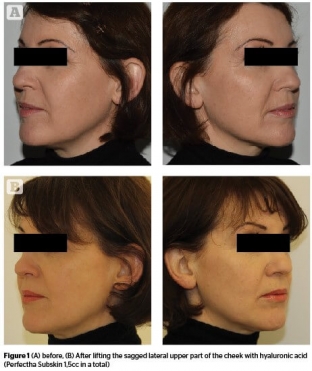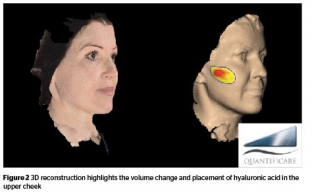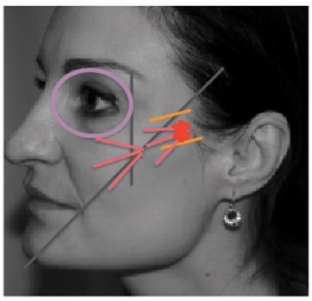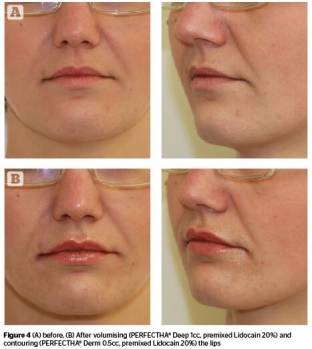Filler injections – one of the most popular aesthetic procedures today. Contour plastic – fast and safe procedure, however, according to Dr. Sabina Zenker, there is a need to improve the quality of the process of introducing fillers. More accurate and simpler injection techniques will not only improve aesthetic results, but also reduce the frequency and extent of injection-related side effects such as pain, swelling, bruising, unevenness, and overcorrection. This can be achieved by introducing fillers with blunt-tipped cannulas.
What to choose for the introduction of fillers: a cannula or a needle?
An unequivocal answer to the question of what is better to use for the introduction of fillers – cannula or needle – does not exist. The two main aspects of injecting fillers – the possibility of control by the doctor and the comfort of the patient – a number of clinical studies and practical observations of estheticians have been devoted to, most of which indicate that the blunt-tipped cannula greatly simplifies the process of introducing fillers.
The blunt-tipped cannulas were originally designed to minimize the risk of complications associated with the use of traditional hypodermic needles. The blunt tip with a side insertion port, as well as the length and flexibility of the cannula, provide its main advantages over needles. The length and flexibility allow the cannula to cover a larger target area, and thus reduce the number of insertion points needed for optimal results. These cannulas also pass more gently and smoothly through the subcutaneous layer, without tearing tissue and blood vessels, like a traditional pointed needle.
Minimum damage and maximum maneuverability – The main reasons why filler injections with blunt cannulas are faster and less painful than with traditional needles.
Minimum damage and maximum maneuverability – The main reasons why filler injections with blunt cannulas are faster and less painful than with traditional needles. Despite this, the cannula – not always the best choice as it cannot be used for intradermal injections.

Fig. 1 (A) before, (B) after upper lateral cheek lift with HA filler (Perfectha Subskin, 1.5 ml total).
Filler cannulas:
- basic features;
- correction of the upper lateral zone of the cheeks;
- lip correction.
Main characteristics of the cannula for the introduction of fillers
As cannulas become more popular and used more and more by estheticians, it is important to understand the important characteristics of these small auxiliary instruments.
The force of insertion/penetration as well as the degree of sliding of the cannula largely depends on the manufacturing process: the silicone coating greatly facilitates the insertion process and increases the maneuverability of the cannula.
The filler ejection force is significantly affected by the design of the cannula wall: the thinner the wall, the more free space for the product and the lower the ejection force – this facilitates the process of injecting the filler. This moment is very important when working with sensitive areas, for example, periorbital.
Introduction of fillers with cannulas for correction of the upper lateral zone of the cheeks
The choice of injection technique, the filler itself, as well as the instruments for its introduction (cannulas, needles, injection systems) is carried out in accordance with specific indications.
For example, in this case, according to the author, it is better to correct the sagging upper lateral zone of the cheeks using a blunt cannula (Fig. –2). In this case, all the above advantages of using such a tool will reduce the risk of side effects and improve the final result. In this case, it is necessary to analyze several specific aspects.

Fig. 2 3D model showing changes in volumes and injection of hyaluronic acid into the upper cheek area
To achieve a gentle, uniform and effective lateral lift in the upper cheek region, it is necessary to use a cannula that will allow the clinician to increase the volume of a relatively large area through just one injection point, as opposed to cases with drooping corners of the mouth when the use of a cannula is not appropriate. For this indication, the blunt cannula is ideal because the filler will be injected in continuous lines, even at intersections of different anatomical layers, from a single insertion point at the zygomatic arch (ZAE) (Fig. 3).
The choice of the length of the blunt-tipped cannula for the introduction of the filler depends on the anatomical parameters of the patient – from 1½ up to 2 inches, caliber – depending on the filler used (mainly 22 & ndash; 27 G). The entry point is located on the zygomatic arch (see Fig. 3). The filler is injected using a linear, fan-shaped technique to cover the entire area of volume loss. Approximately 0.1-0.2 ml of the drug is injected into the line. Purpose – achieve the final result (shaping and lifting of the upper lateral part of the cheeks) without overcorrection (see Fig. 1).

Fig. 3 The entry point on the zygomatic arch, which is used to correct the ptosis of the lateral zone of the cheeks to achieve the effect of lateral lifting
Fillers injection with cannulas for lip correction
The size and shape of the red border of the lips changes with age. As a rule, patients go to the doctor with a request to improve the shape of the lips, make them symmetrical, add volume and adjust the contour. In most cases, the ratio of the upper lip to the lower 1:2 is considered aesthetically attractive. Overprojection of the upper lip must be avoided.
Hyaluronic acid-based fillers are most often used for lip correction.
The author suggests injecting the filler starting from the red border of the lips, placing the filler boluses from the center to the lateral part of the lips. To define the lip contour, the author injects the filler along the vermilion border of the upper and lower lip using a blunt cannula, using a linear insertion technique, starting from the most lateral edge of the lips.
In this case (Figure 4), the author used Perfectha Deep (Sinclair Pharma, London, UK) mixed with 1% lidocaine at 20%, and an automated injection system. The doctor recalls that it is important to remember to give definition to the lateral part of the lips, where “discoloration” is observed with age, and also to inject a smaller amount of the drug into the lateral zones in order to avoid “duck” lip appearance and overcorrection. The introduction of the filler by cannula allows you to reduce the number of injection points for this indication.
Read also: How to correct the contour of the lips: methods and means

Fig. 4 (A) before, (B) after volumization (1 ml Perfectha Deep pre-mixed with 20% lidocaine) and contouring (0.5 ml Perfectha Derm premixed with 20% lidocaine) lips
The use of a blunt cannula for the introduction of fillers to correct the upper and lateral parts of the cheeks or lips, according to Sabina Zenker, not only improves the aesthetic result, but also provides a more comfortable administration of the drug for the patient: reduce pain, the number of bruises and reduce the time of the procedure.
According to Prime magazine







Add a comment